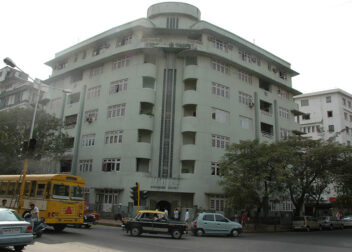Ajanta caves
Introduction about Ajanta caves
The Ajanta caves are a champion among the most comprehended heritage and historic sites in India. They are fine cases of the rich social heritage and customs of ancient India and are prevalent for their striking structures and carvings. Vacationers who influence trips to Ajanta to can witness the dynamite outline and carvings and get a vibe of the rich social heritage of ancient India. The Ajanta caves are recorded among the World Heritage Sites by UNESCO. The caves are a kind of Buddhist sanctuary and are masterminded near the city of Aurangabad in the region of Maharashtra. By far most of the caves were created in the period between the second century BC and the 6th century AD. There are 29 caves in Ajanta, which are altogether known for their superb canvases. Ajanta caves are arranged in the midst of the Sahyadri Hills and are produced by means of cutting into the mountainside. They are known for exquisite portrayals. The canvases depict the record of Buddhism and the Jatakas. Distinctive stories related to the Jataka stories are interpreted as beautiful arrangements. The canvases were made with home-developed tones which make them uncommonly speaking to look at and environment well disposed of. The caves similarly contain a couple of statutes and figures of Lord Buddha in various stances. The models were made with direct mechanical assemblies like sleds and engravings. The Ajanta caves can be viably come to from various parts of the country. The nearest plane terminal is arranged in the city of Aurangabad. Standard transports, automobiles and autos utilize among Aurangabad and the caves. Aurangabad is moreover related by all around made railways and roadways with various parts of the country.
Ajanta caves history
The most reliable Ajanta caves were cut in the second Century BC out of stallion shoe-formed slope along the Waghora River. They were used by Buddhist ministers as requests of halls (chaitya grihas) and religious groups (viharas) for around nine centuries.
Out of the 30 revealed caves, five (clasp no. 9, 10, 19, 26, and 29) are chaitya grihas (supplication passages) and the rest are viharas (monastries). In date and style, these caves can be apportioned into two broad stages.
Stage I (second Century to first Century BCE) – The most dependable unearthings were done by the Satavahanas and have a place with the Hinayana (Theravada) time of Buddhism. The subject of adoration is a stupa here. Caves 9, 10, 12, 13 and 15A have a place with this time.
Stage II (fifth Century AD to 6th Century AD) – These unearthings are a critical duty of the Vakatakas and Chalukyas and have a place with Mahayana time of Buddhism.
Facts about Ajanta caves
It is assumed that a couple of Buddhist priests contributed a considerable measure of vitality at the Ajanta caves in the midst of the tempests as they were disallowed from going in the midst of that particular time. This was the time when the priests put their inventiveness and time to use and painted the dividers of the caves.
Besides the stunning painting and models, there were similarly enormous Buddhist hills like stupas collected, massive sections of complicatedly quick and dirty carvings on the rooftops and dividers influenced immense news, to know the Ajanta caves as the status of a heritage site.
Ajanta caves How to reach
The Ajanta Caves are located in the Aurangabad district of Maharashtra, India. To reach the caves, one can follow these modes of transportation:
- By Air: The nearest airport is Aurangabad Airport, which is well-connected to major cities in India. From the airport, one can take a taxi to reach the caves.
- By Train: The nearest railway station is Aurangabad Railway Station, which is well-connected to major cities in India. From the railway station, one can take a taxi to reach the caves.
- By Bus: Buses from Aurangabad to the Ajanta Caves are available, and the journey takes around 2-3 hours. One can also take a taxi or hire a car for the journey.
Best time to visit
The best time to visit the Ajanta Caves is from October to March when the weather is pleasant, and the temperature is moderate. During this time, the temperature ranges from 10°C to 30°C, making it ideal for sightseeing and exploring the caves. The monsoon season (July to September) should be avoided as the caves tend to get flooded, making it difficult to visit. The summer months (April to June) can get quite hot, with temperatures reaching up to 40°C, so it may not be the most comfortable time to visit.
Nearby attractions
The Ajanta Caves are located in the Aurangabad district of Maharashtra, India and there are several nearby attractions that one can visit:
- Ellora Caves: The Ellora Caves are another ancient rock-cut temple complex, located about 30 km from the Ajanta Caves. The Ellora Caves are a UNESCO World Heritage site and are known for their intricate carvings and sculptures.
- Bibi Ka Maqbara: Bibi Ka Maqbara is a mausoleum located in Aurangabad, and is known as the “Taj Mahal of the Deccan”. The mausoleum was built in memory of Aurangzeb’s wife and is known for its stunning architecture.
- Aurangabad Caves: The Aurangabad Caves are a group of rock-cut Buddhist shrines located in Aurangabad. The caves date back to the 6th and 7th centuries and are known for their intricate carvings and sculptures.
- Daulatabad Fort: Daulatabad Fort is an ancient fort located in Daulatabad, about 13 km from Aurangabad. The fort is known for its history, architecture, and stunning views.
- Panchakki: Panchakki is a water mill located in Aurangabad. The mill was used to grind grain for the Sufi saints who lived in the area and is now a popular tourist attraction.



